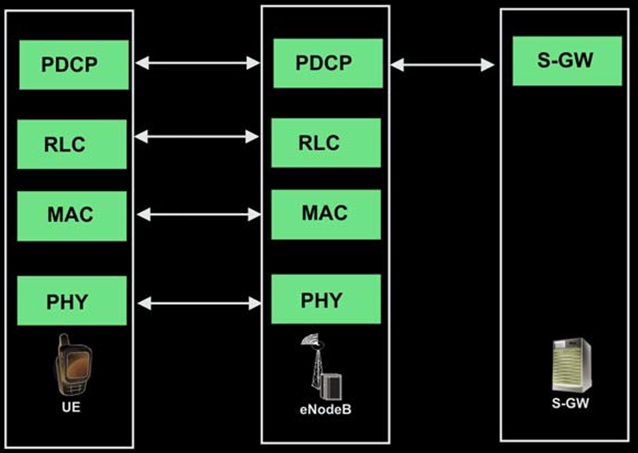The user plane includes the data streams and the data bearers for the data streams. The data streams are characterized by one or more frame protocols specified for that interface.
Figure shows “User-plane protocol stack” comprise Medium Access Control (MAC), Packet Data Convergence Protocol (PDCP), Radio Link Control (RLC) and Physical (PHY) sub layers. Apart from the serving gateway protocols, all radio interface protocols terminate in the eNodeB on the network side.

The LTE user plane protocol performs the following functions:
Physical (PHY) Sublayer :
The physical layer is between the UE and the eNodeB. The physical layer in LTE supports the Hybrid ARQ with soft combining, uplink power control and multi-stream transmission and reception (MIMO).
Media Access Control (MAC) Sublayer :
The MAC sublayer is between the UE and the eNodeB. MAC sublayer performs error correction through HARQ, priority handling across UEs as well as across different logical channels of a UE, traffic volume measurement reporting, and multiplexing/demultiplexing of different RLC sublayer.
Radio Link Control (RLC) Sublayer :
The RLC sublayer is between the UE and the eNodeB. Along with transferring upper layer PDUs, the RLC does error correction through ARQ, in-sequence delivery of upper layer PDUs, duplicate detection, flow control and concatenation or re-assembly of packets.
Packet Data Convergence Protocol (PDCP) Sublayer:
For the user plane, the PDCP sublayer performs header compression and ciphering.